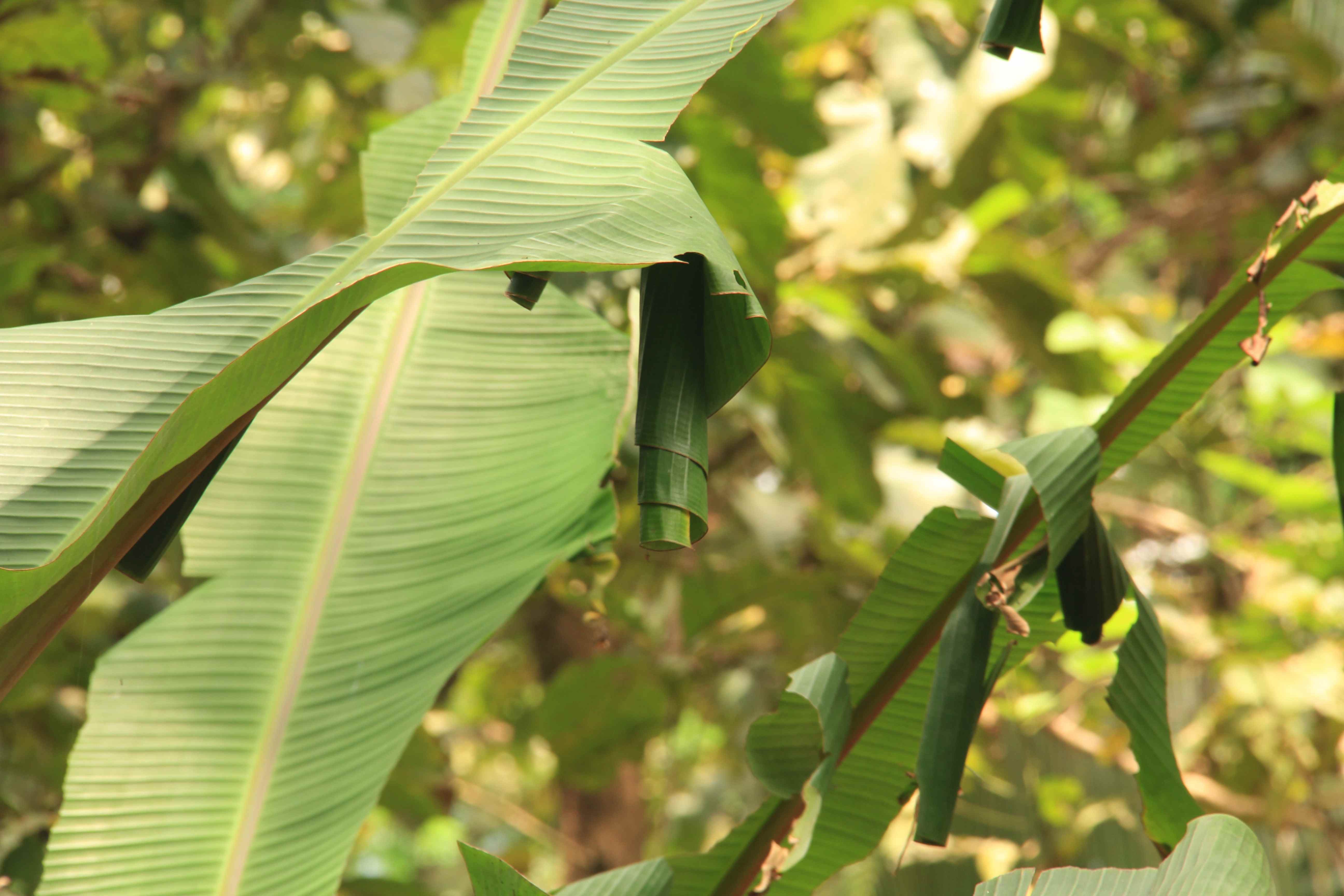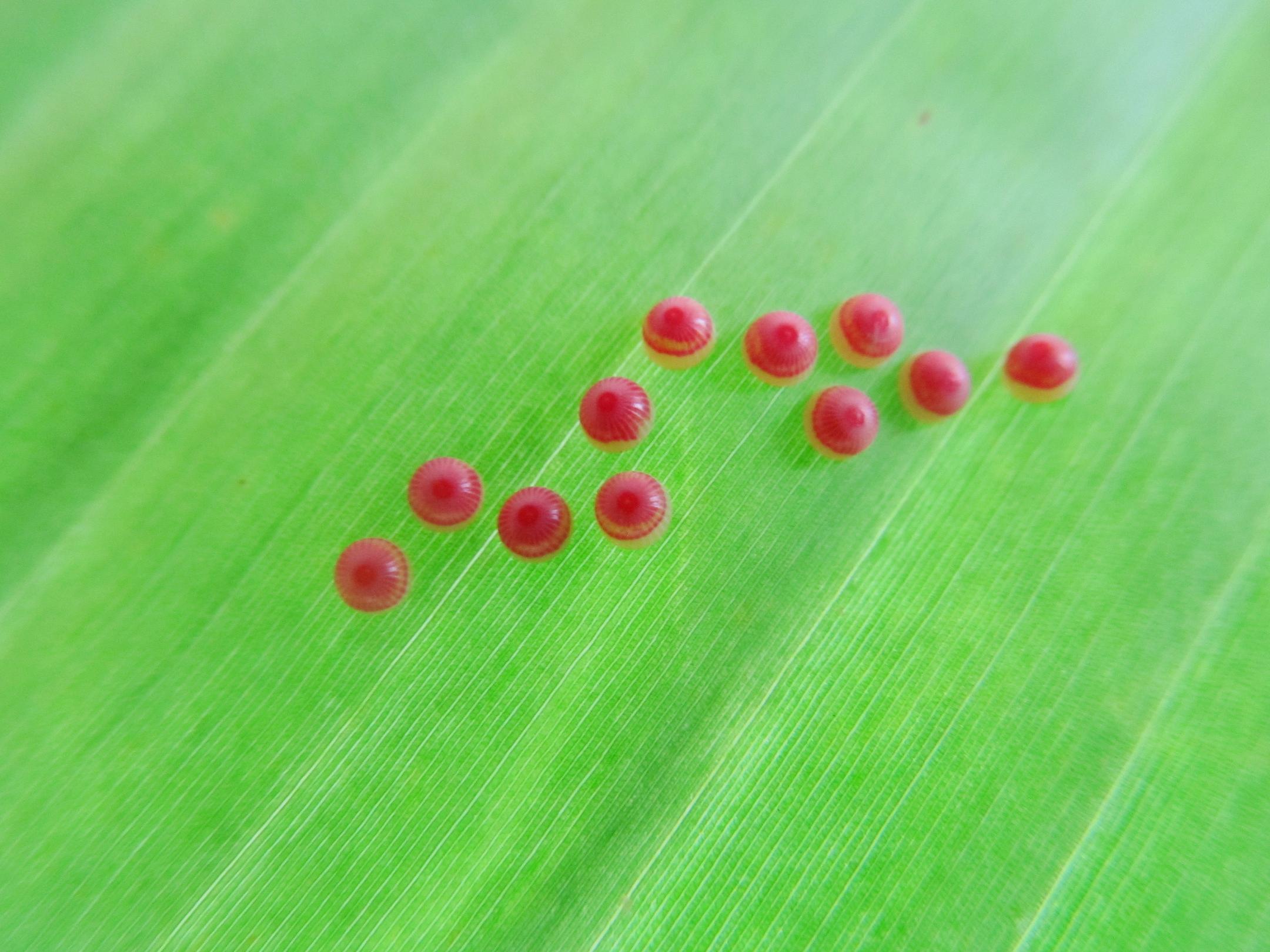The Torus Banana Skipper ( Erionota torus Evans, 1941 ) destroying Banana plantations in Kerala
David Raju reported flutters that Torus Banana Skipper ( Erionota torus Evans, 1941 ) has been destroying Banana plantations in many districts of Kerala.
Typically one will see rolled Banana leaves and black mass, which would be caterpillar's excreta.
Symptoms of this infestation is shown in the below set of photos.
All the photos are clicked by Abraham Samuel in Thattekkad in October, 2013







(1) Spotting the eggs and caterpillars and destroying them should be one of the most nature-friendly ways of getting rid of this infestation.
Below are the some photos of the eggs taken by Haneesh K.M. in October,2013 .


Below caterpillar photos are taken by Abraham Samuel in Thattekkad in October, 2013


(2) This method is suggested by Dr. Ankita Gupta.
Try 5% NSKE spray- Neem seed kernel extract spray.
It acts as feeding deterrant for caterpillars ( So caterpillars will not feed on banana leaves), oviposition inhibitor ( so females will not lay eggs), etc.
You can go through -> .http://takingroots.in/ipm_nske .
(3) Identifying the parasites and rearing them en masse in the lab and releasing them in the infested areas is one of the possible solutions.
This would take sometime to implement, as the right parasite that can be grown in large number needs to identified.
All the photos are clicked by Abraham Samuel in Thattekkad in October, 2013
Nature-friendly solutions:
(1) Spotting the eggs and caterpillars and destroying them should be one of the most nature-friendly ways of getting rid of this infestation.
Below are the some photos of the eggs taken by Haneesh K.M. in October,2013 .
Below caterpillar photos are taken by Abraham Samuel in Thattekkad in October, 2013
(2) This method is suggested by Dr. Ankita Gupta.
Try 5% NSKE spray- Neem seed kernel extract spray.
It acts as feeding deterrant for caterpillars ( So caterpillars will not feed on banana leaves), oviposition inhibitor ( so females will not lay eggs), etc.
You can go through -> .http://takingroots.in/ipm_nske .
(3) Identifying the parasites and rearing them en masse in the lab and releasing them in the infested areas is one of the possible solutions.
This would take sometime to implement, as the right parasite that can be grown in large number needs to identified.

